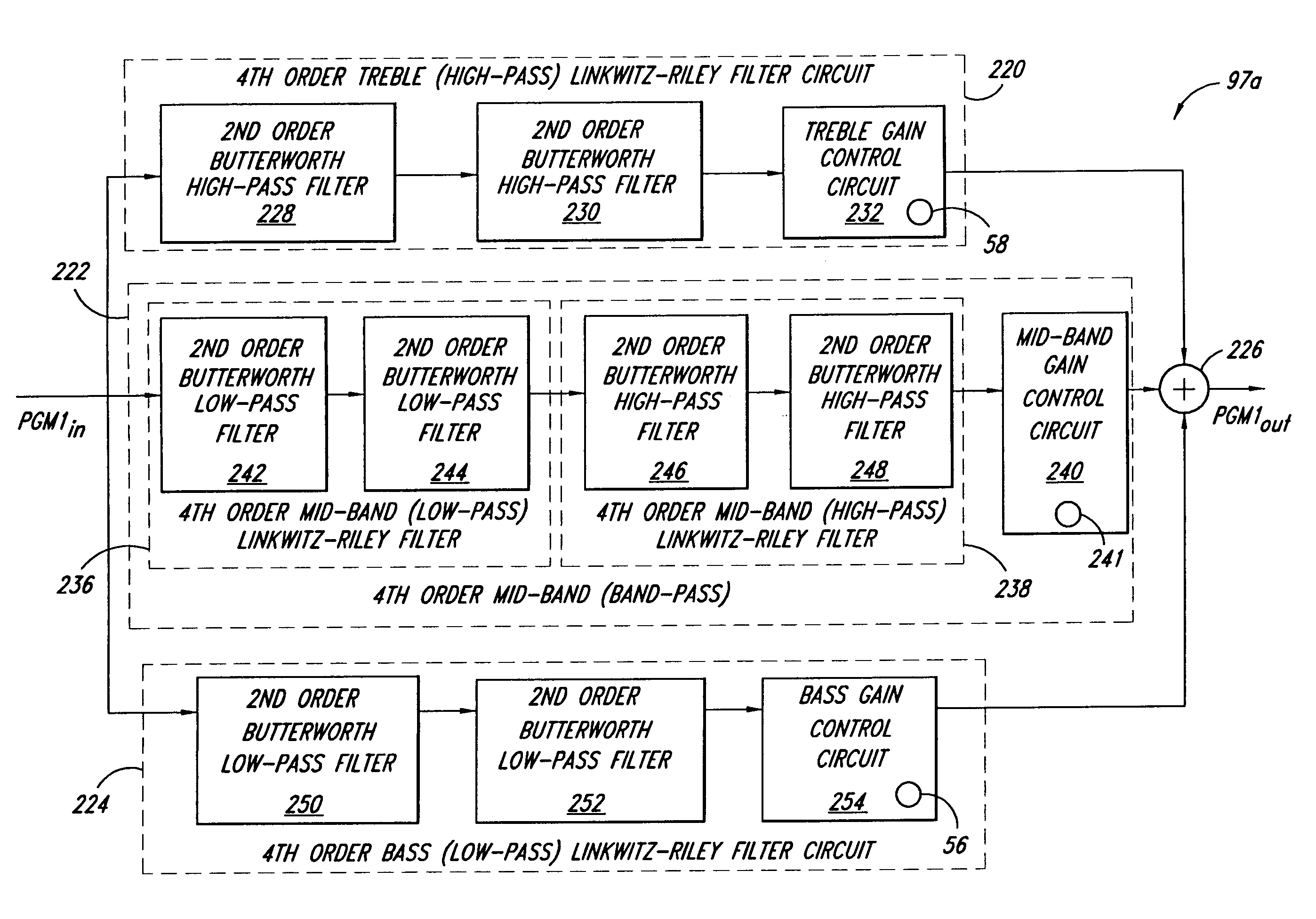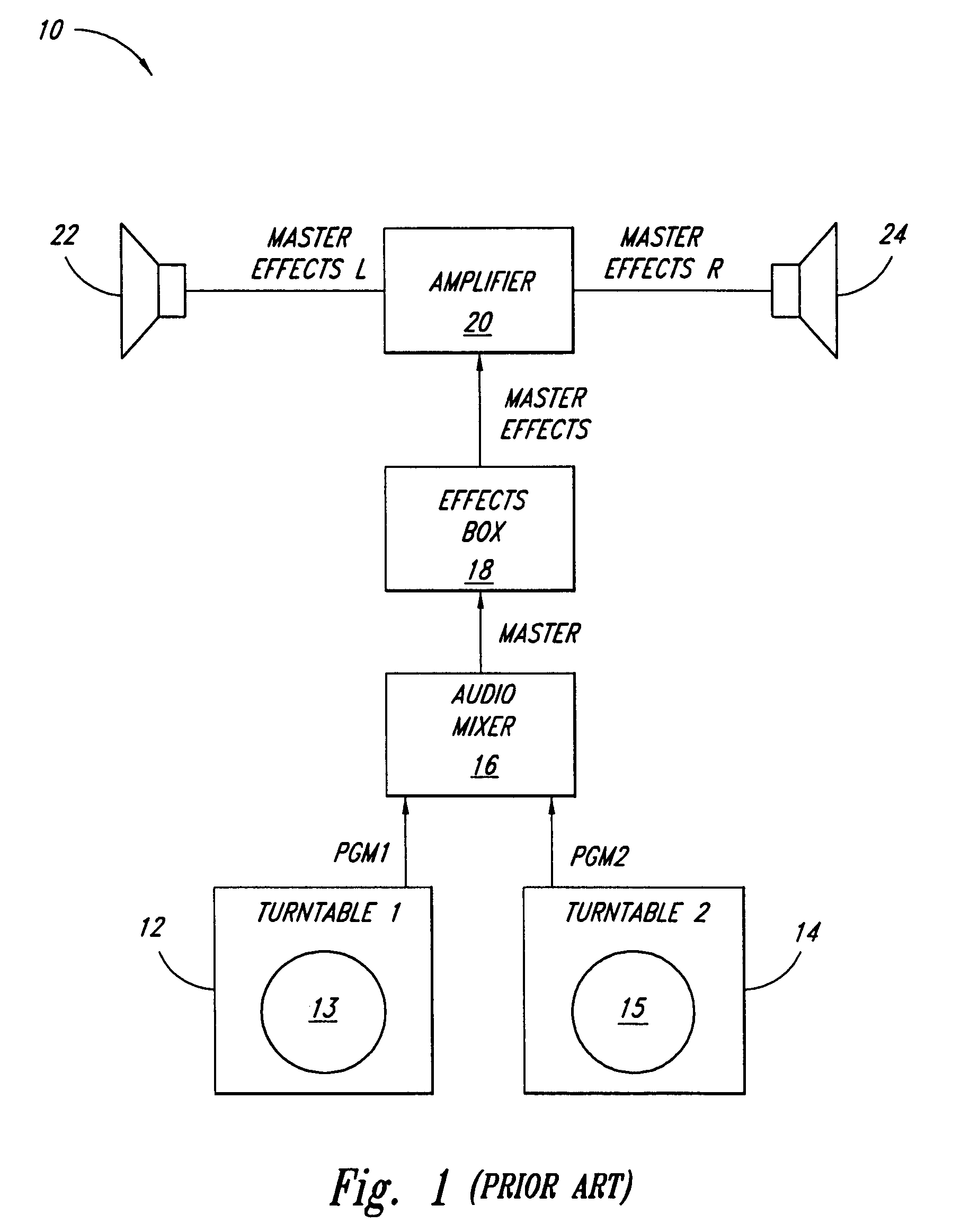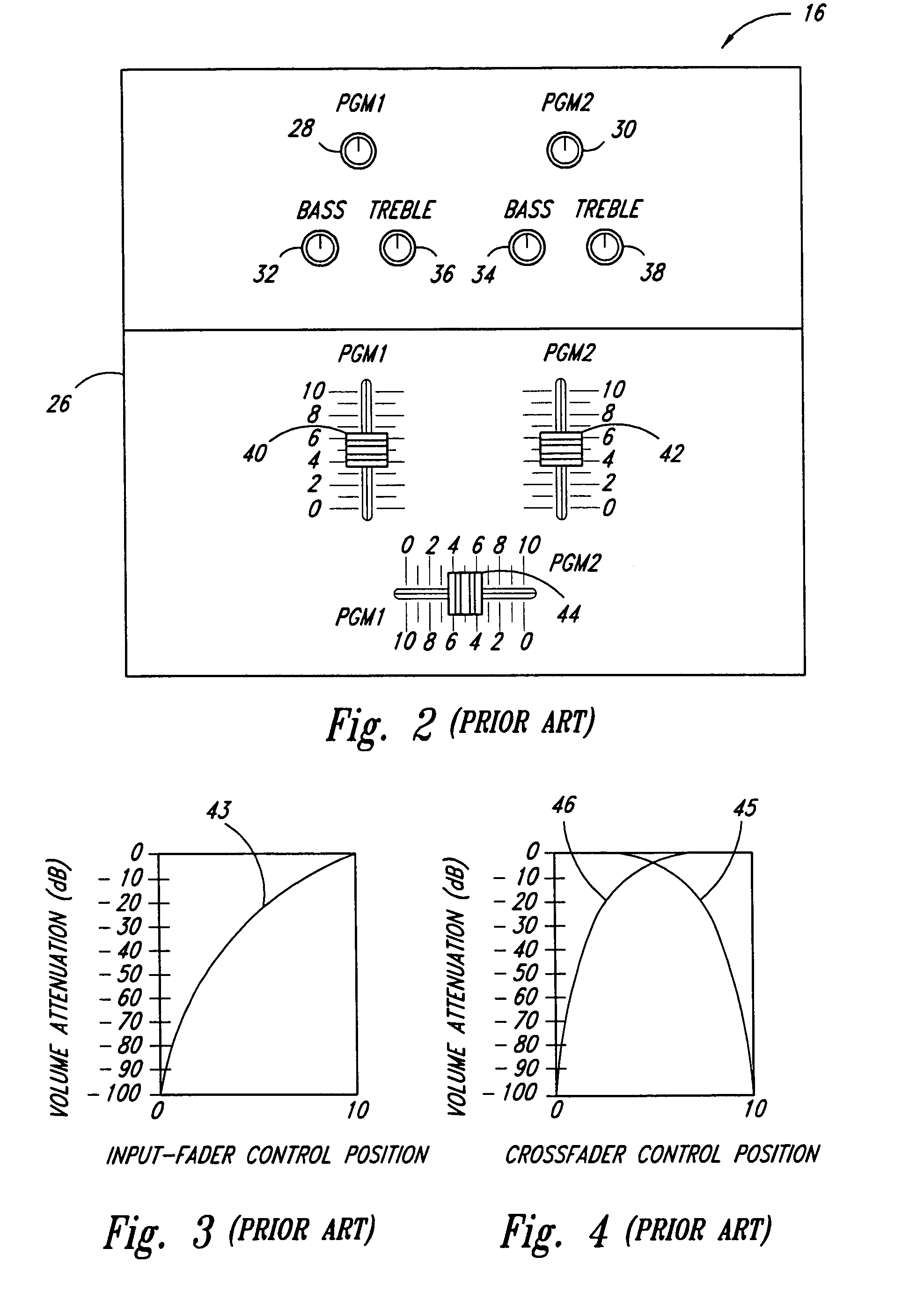Tone-control circuit and method for conditioning respective frequency bands of an audio signal
a tone control circuit and frequency band technology, applied in the field of electronic circuits, can solve the problems of low-noise potentiometers that are relatively expensive, complex, and lack the consistent performance required by turntablists, and achieve the effect of reducing the area of the circuit board and lowering the cost of the devi
- Summary
- Abstract
- Description
- Claims
- Application Information
AI Technical Summary
Benefits of technology
Problems solved by technology
Method used
Image
Examples
Embodiment Construction
[0055]FIGS. 5A–C are respective views of an audio mixer according to an embodiment of the invention, and FIG. 5D is a block diagram of a sound system that incorporates the audio mixer of FIGS. 5A–C.
[0056]FIG. 5A is a top view of a mixer 50 according to an embodiment of the invention. For example, the mixer 50 may be a TTM 54 Performance Mixer manufactured by RANE Corporation of Mukilteo, Wash. The mixer 50 includes a control panel 52, which includes an all-band gain control 54 and bass-band and treble-band gain controls 56 and 58 for the PGM1 signal, and which includes an all-band gain control 60 and bass-band and treble-band gain controls 62 and 64 for the PGM2 signal. The all-band gain controls 54 and 60 function like the controls 28 and 30, respectively, of FIG. 2. The bass-band and treble-band gain controls 56, 58, 62, and 64 function like the controls 32, 36, 34, and 38, respectively, of FIG. 2, but the tone-control circuits of the mixer 50 (not shown in FIG. 5A) are significan...
PUM
 Login to View More
Login to View More Abstract
Description
Claims
Application Information
 Login to View More
Login to View More - R&D
- Intellectual Property
- Life Sciences
- Materials
- Tech Scout
- Unparalleled Data Quality
- Higher Quality Content
- 60% Fewer Hallucinations
Browse by: Latest US Patents, China's latest patents, Technical Efficacy Thesaurus, Application Domain, Technology Topic, Popular Technical Reports.
© 2025 PatSnap. All rights reserved.Legal|Privacy policy|Modern Slavery Act Transparency Statement|Sitemap|About US| Contact US: help@patsnap.com



